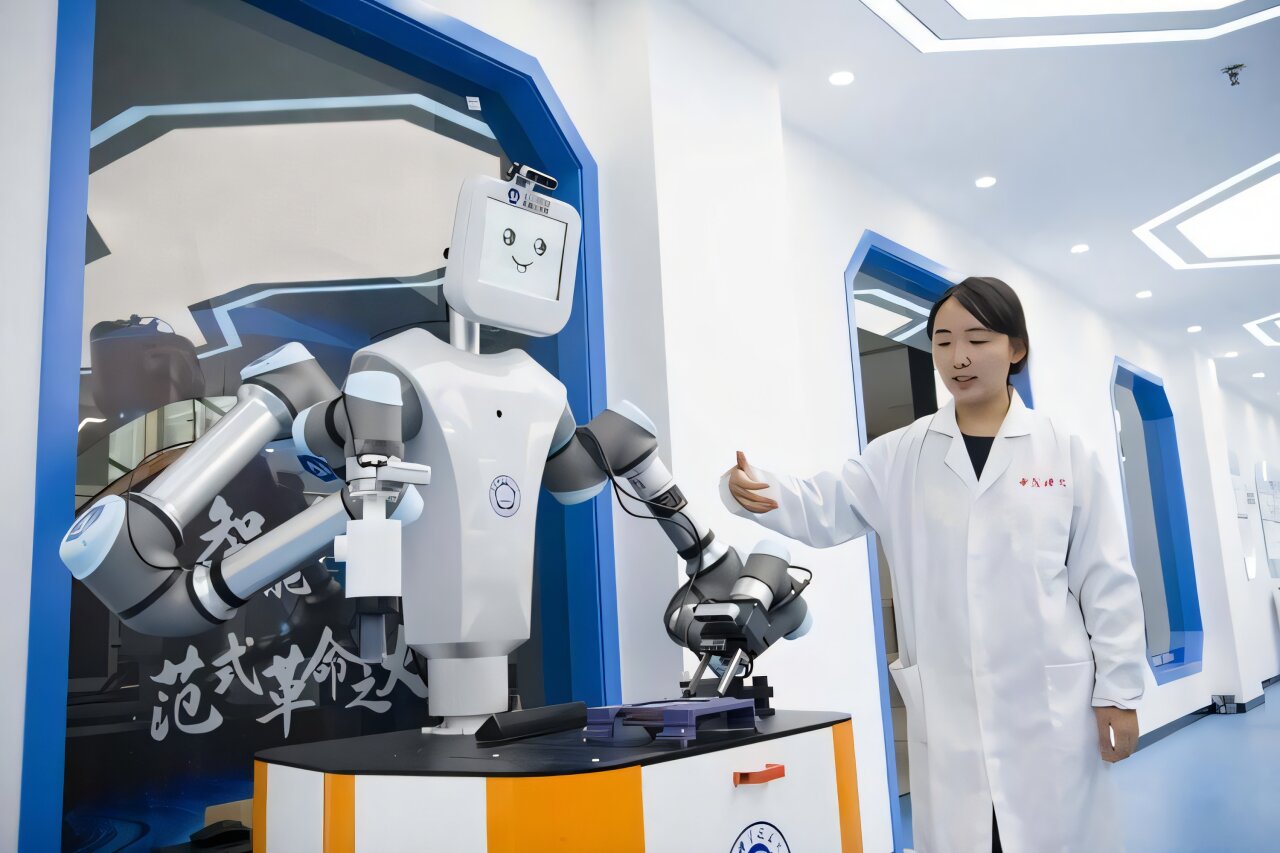
Credit: University of Science and Technology of China
Imagine a lab assistant with the computational and operational power of 10 Ph.D. students, capable of functioning in extreme environments such as Mars. This vision has become a reality at the University of Science and Technology of China (USTC), where a team of scientists has developed a robotic chemist named Luke.
Built with a sleek white frame, two robotic arms and advanced components such as a vision system, AI computing platform and human-machine interaction software, Luke handles delicate tasks such as pouring liquids and grinding solids, while designing in independently experiments and tests hypotheses.
Compared to humans, Luke can perform experiments over and over, achieving an accuracy of 0.1 millimeters in his operations.
“What is most remarkable is Luke’s ability to learn and analyze,” said Zhao Luyuan, a 26-year-old Ph.D. student who worked on the project for more than three years. “It can learn from 50,000 academic papers in two weeks and verify over 3.76 million experimental formulations in six weeks.”
“Robots are becoming effective tools for scientists. Give them a scientific problem and they can design experiments, complete them with high efficiency and accuracy, and provide optimized solutions,” said Jiang Jun, a professor in the School of Chemistry. and Materials Science. USTC.
Since last year, AI chemists developed at the university have achieved important milestones, including the creation of catalysts to produce oxygen based on Martian meteorites – a step towards enabling long-term human habitation on Mars. Robots are also researching organic films for anti-counterfeiting and cost-efficient coal-to-oil conversion technologies.
According to Jiang, AI is driving a revolution in the field of scientific research, allowing scientists to break physical and mental limitations, exponentially increase productivity and accelerate scientific discoveries.
Robotic chemist projects have become a global research hotspot, attracting interest from institutions in countries such as the UK, Switzerland and the United States.
The development aligns with China’s efforts in developing humanoid robots – a technological convergence of AI, advanced manufacturing and new materials.
China aims to establish a preliminary innovation system for humanoid robots by 2025, according to a guideline from the Ministry of Industry and Information Technology. By 2027, the country will see a secure and reliable industrial and supply chain system, while related products will be deeply integrated into the real economy.
According to a report released at the First China Humanoid Robot Industry Conference in April, the market scale of China’s humanoid robot industry is expected to reach 75 billion yuan (US$10.56 billion) by 2029, accounting for 32.7% of the global total. .
Despite these advances, challenges remain. Sun Tao, a professor at Tianjin University’s School of Mechanical Engineering, said improvements in battery life, decision-making and natural interaction capabilities are still needed before humanoid robots can be deployed on a large scale.
For Jiang, however, the real significance of his robotic companion’s emergence is its potential to free up human scientists for greater innovation, giving them the time to pursue dreams and discoveries that push the boundaries of imagination.
Provided by University of Science and Technology of China
citation: Robot ‘Chemist’ poised to transform science labs (2024, November 7) retrieved November 7, 2024 from https://techxplore.com/news/2024-11-chemist-robot-poised-science-labs.html
This document is subject to copyright. Except for any fair agreement for study or private research purposes, no part may be reproduced without written permission. The content is provided for informational purposes only.
